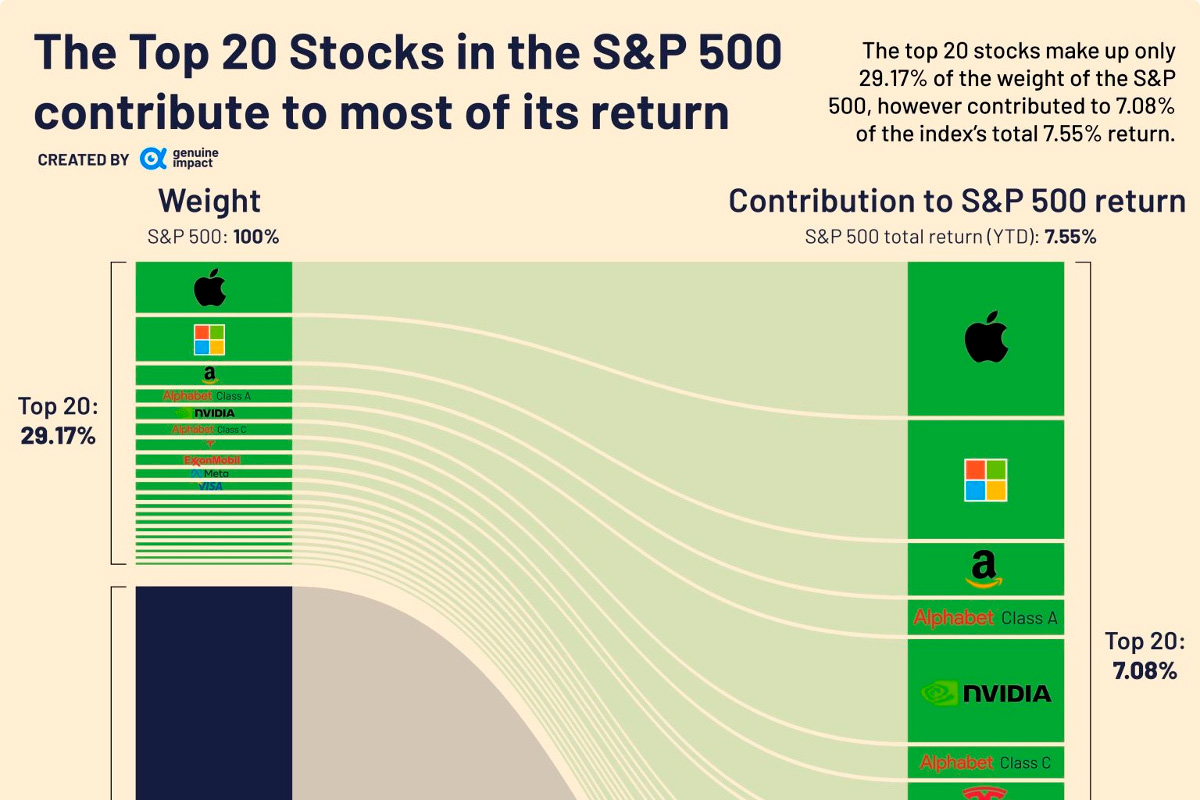
Just 20 Stocks Have Driven Most of S&P 500 Returns
Just 20 firms—mainly AI-related stocks—are propping up the S&P 500 and driving it into positive territory, signaling growing risk in the market.
The above graphic from Truman Du shows which stocks are making up the vast majority of S&P 500 returns amid AI market euphoria and broader market headwinds.
Big Tech Stock Rally
Tech and AI stocks have soared as ChatGPT became a household name in 2023.
The below table shows data from last month, highlighting that just a small collection of companies drove most of the action on the U.S. benchmark index.

Microsoft invested $10 billion into OpenAI, the creators of ChatGPT. It has also integrated generative AI into its search engine Bing. This large language model is designed specifically to make search capabilities faster, generate text, and perform other automations.
Also of interest is NVIDIA, which is the most valuable chipmaker in America. It sells $10,000 chips called A100s that allow machine learning models to run. These models perform multiple tasks simultaneously to develop neural networks and train AI systems, including OpenAI’s ChatGPT. Companies that are developing AI-related services, such as chatbots or image generation, may use up to thousands of these chips.
Despite being the world’s most valuable company and a key driver of returns, Apple is an outlier among tech giants with no major projects announced in AI (so far).
Implications of Market Divergence
The problem with the strong gains seen in a few select AI-related stocks is that it clouds wider stock market performance.
Without the AI-led rally, the S&P 500 would be returning -1.4%. as of May 17, 2023.
4. AI is fueling the stock market
A handful of stocks are spearheading the S&P 500’s impressive 9% rally this year.
Here’s the kicker: if you excluded AI stocks, the S&P 500 would be down over 1% (according to Societe Generale). pic.twitter.com/SME1mJVpoW
— Rowan Cheung (@rowancheung) May 22, 2023
This form of steep divergence, known as market breadth, often signals higher risk in the market.
When more companies experience positive returns it is less risky than a small handful seeing the majority of the gains. Today market breadth is very narrow, and these companies make up over 29% of the entire index’s market capitalization.
How long AI-related firms mask the broader performance of the S&P 500 remains to be seen. A growing number of market pressures, from higher interest rates to banking uncertainty could add further challenges.







